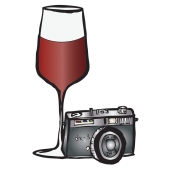I have recently been approached by a representative of Utah-based consumer electronics company Elertus who loaned me for a few weeks a sample of a newly released product of theirs targeting the wine market for me to test and consider for a review.
The product is called Elertus Wine Protection System and basically revolves around a small (3.1×2.6×1.05″ and 2.5 oz), battery-powered, wireless sensor that monitors and alerts users if anyone opens their wine cellar, wine cooler, or liquor cabinet door. So, the main purpose of the system is to notify users of potential theft or unauthorized access to their wine storage facility.
The system also continuously monitors light levels, temperature (-30 to 150 F) and humidity (0% to 100%) conditions, ensuring wine collections are stored in an optimal environment. It also notifies users if the sensor is moved from its current position.
The system is compatible with any wine or liquor cabinet with or without a locking mechanism. The sensor is designed for simple installation without special tools or permanent cabinet modifications and it connects to your Wi-Fi system.
 The Elertus system comes in a small box complete with the required batteries and visual, simple, easy to follow, step-by-step instructions for connecting the sensor to your local Wi-Fi network. I have to commend Elertus for providing a set of clear and simple instructions that really makes it easy for you to install the sensor, configure it and connect it to your Wi-Fi network in a breeze: I think I got my system up and running in about five minutes.
The Elertus system comes in a small box complete with the required batteries and visual, simple, easy to follow, step-by-step instructions for connecting the sensor to your local Wi-Fi network. I have to commend Elertus for providing a set of clear and simple instructions that really makes it easy for you to install the sensor, configure it and connect it to your Wi-Fi network in a breeze: I think I got my system up and running in about five minutes.
Once the system is operational, it immediately starts tracking the environmental conditions the sensor is in. Also, through the control panel of the system app, you can configure acceptable ranges of values both for temperature and humidity and then what you want to be notified of (such as temperature and humidity outside of the user-defined ranges of acceptable values, door open, light turned on or off, movement of the unit) and the way you want to be notified in (such as any or a combination of email, text message and smartphone notification alerts).
So, once it is customized, the Elertus app can notify you if any conditions change, such as the cellar door is opened, the light is turned on or the temperature or humidity gets too high or too low. In addition, you receive a weekly system-generated email that provides a snapshot of the conditions recorded by the sensor at the specific date and time the email is generated (i.e., no weekly average, just a read out of the current conditions). The Elertus system can be monitored and configured through a computer or smartphone app (iPhone®, iPad®, iPod touch®, and Android™).
The Elertus Wine Protection System is available at www.elertus.com for $199, inclusive of monitoring, alerts and smartphone app.
In a nutshell, these are my conclusions about the Elertus system after using it for a couple of weeks:
PROS:
- Super easy, quick and trouble-free installation and configuration
- Nice, clean and user-friendly user interface app
- Works as advertised (monitors temperature, humidity, light level, movement and door open and notifies you in the way you set the system up for)
CONS:
- Expensive for personal use, that is other than in a commercial establishment
- I could not find a way to remotely trigger an instant read out of the current conditions (in the absence of a status notification) through the user interface app
- Light level sensor is not very sensitive (requires a fairly bright light to be triggered)
Rating: Good to Very Good

 A few days ago,
A few days ago, 

 Now, although WP is fully functioning and sleek looking, here are a few things to bear in mind:
Now, although WP is fully functioning and sleek looking, here are a few things to bear in mind:

 The international press,
The international press, 



